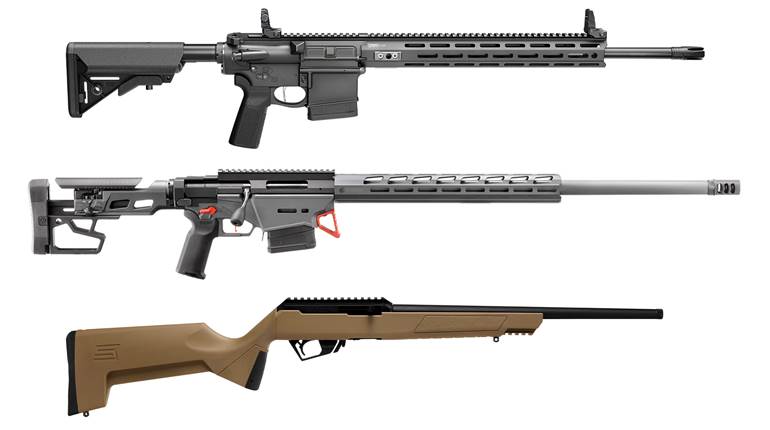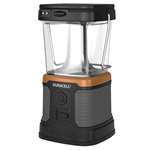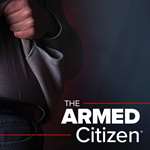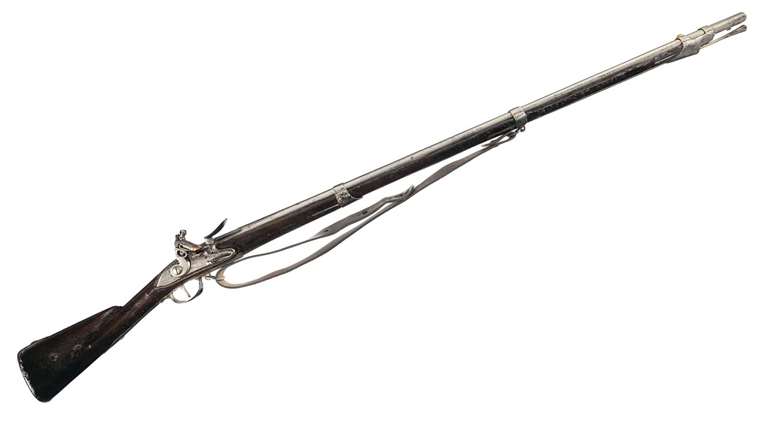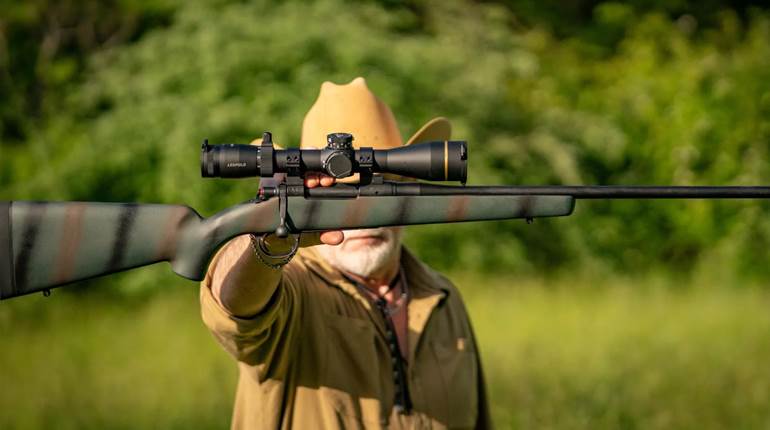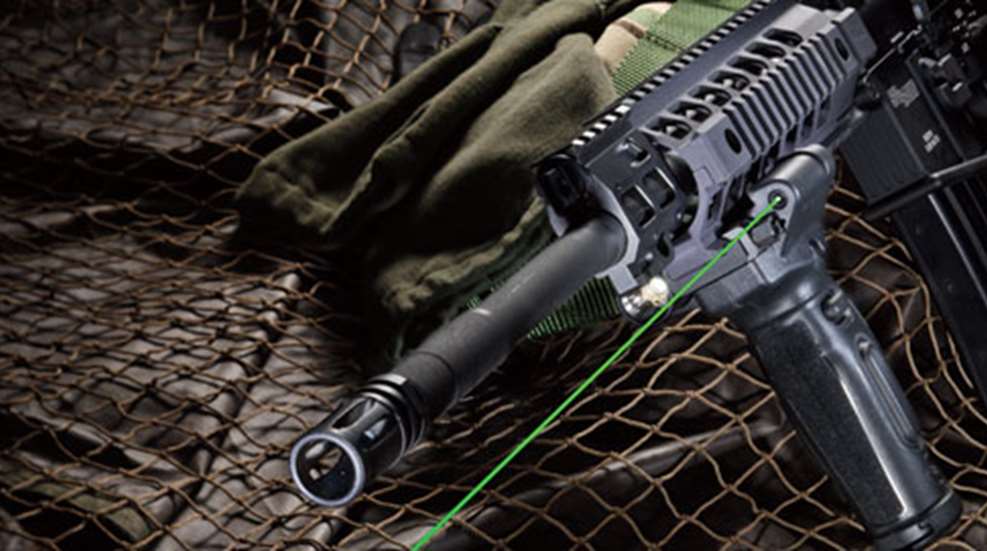
One of the latest additions to Crimson Trace’s MVF line is the MVF-515 Green, a laser/flashlight/foregrip that attaches to MIL-STD-1913 Picatinny rails. It consolidates three typically separate accessories into a single unit, occupying minimal space on the rail platform and, compared to the red version, has a green laser that is more readily seen at greater distances.
The MVF-515’s internal frame is a 6061-T6 aluminum battery housing bolted to a 2¾-inch horizontal aluminum bar that attaches to the rail. Two screws tighten the dual steel lugs to the gun’s rail. Elongated rubber O-rings on the edges of either side of the battery housing, which mate to the insides of the laser and light panels, are designed to protect both the two CR123A batteries and electronics from water and dirt ingress.
The vertically split laser and light shrouds are molded polymer with stippling on the front and rear. They clamp to the sides of the frame and are held in place with a sliding butt cap on the bottom of the grip. Removing a single panel allows access to the battery housing, which can be done while keeping the frame and opposite panel attached to the gun rail.
Each polymer shroud features two overmolded pressure pads for independent laser and light activation. The elongated vertical pads on each side activate the laser, and the small, horizontal pads on each side activate the light, allowing ambidextrous use for both functions. Both the light and the laser can be set independently for momentary on/off, strobe on/off, or constant on/off by depressing the smaller master on/off buttons located above the light switches. The light can be adjusted to either 200 lumens or 150 lumens, and the laser is adjustable for windage and elevation. The 5-milliwatt laser projects a 1/2-inch dot at 50 feet.
The green laser was readily seen in daylight out to about 90 yards compared to 60 yards with the red. In low light and in darkness, the laser could be seen far beyond the distance of its intended use for close-range target acquisition.
However, the green laser’s more complicated laser diode requires more battery power. Constant-on run-time for the green is about six hours, compared to about 48 hours for the red. Also, the green laser is more sensitive to cold temperatures, as confirmed in testing. An hour in the 0-degree F freezer disabled it, and an hour in the 42-degree F refrigerator decreased its intensity by about half. The flashlight, however, remained unaffected.
Forty-five seconds under a water faucet had no effect on either the laser or the light. Repeated drop-tests at 4 feet onto a hard surface had no effect on the laser, but jostled the batteries enough to reset the light setting. Also, the laser held its zero after more than 200 rounds through an AR-15 in .223 Rem.
At first consideration the MVF seemed expensive. But a quality, stand-alone, 200-lumen light, a separate vertical foregrip, and a close-quarters laser or secondary red-dot sight together can cost in excess of $800—while using significantly more rail space, having equal or greater combined weight, and requiring greater manipulation for light and laser operation. Exposed cables can also be an issue, as they can hang up or be cut. The MVF’s quality construction, its compact, multi-purpose design, and its various applications for home-defense, training, hunting and recreation earn it overall positive marks.
Manufacturer: Crimson Trace Corp.; (800) 442-2406; www.crimsontrace.com
Frame: 6061-T6 aluminum
Housing: molded polymer, stippling
Laser: windage- and elevation-adjustable; 5mW peak, 520-540nm, class 3R laser; 1/2" dot at 50 ft.
Light: adjustable 150- to 200-lumen LED white light
Batteries: two CR123A
Weight: 10 ozs.
Suggested Retail Price: $649












